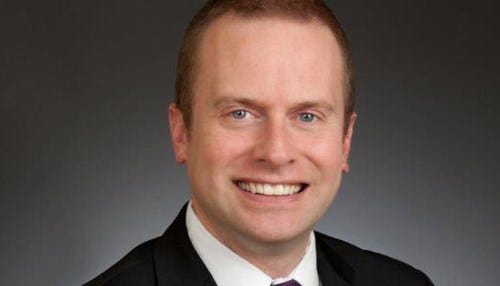Transportation Priorities at a Crossroads
 Huber says more than 90 percent of companies in the city have no international sales.
Huber says more than 90 percent of companies in the city have no international sales.
Subscriber Benefit
As a subscriber you can listen to articles at work, in the car, or while you work out. Subscribe NowIn the next few weeks, both the Indiana General Assembly and City-County Council in Indianapolis will vote on critical infrastructure investments: State lawmakers are debating better solutions for road and highway funding; a few blocks east on Washington Street, the City-County Council nears a final vote on improving mass transit service.
We want to thank all these officials for a constructive dialogue on transportation and transit issues: Supporting a growing population and logistics industry, connecting workers with jobs, creating a stronger business climate and a more appealing destination for talent – they all fall under a broader definition of ‘infrastructure’ for the 21st century economy. Too often policy conversations move to "either/or" propositions that sacrifice one idea for another; we must think in a more collaborative way to achieve regional progress.
Now is the time to pass realistic plans to pay for both these priorities – sustainable revenues for Indiana’s infrastructure demands, better transit options for its largest city.
For state lawmakers, the debate is about finding a funding strategy beyond the two-year budget cycle.
One of every four dollars earned by Indy workers is paid by manufacturing and logistics businesses. Last year, our regional economic development team supported 25 successful logistics projects, creating 3,000 new jobs. We negotiated 24 deals with manufacturers to invest another half-billion dollars in our economy.
For these and other companies, an Indy address means access to suppliers and customers, across the country and globally. But as they consider making long-term commitments to Central Indiana, they deserve long-term confidence in well-funded transportation infrastructure that’s a lasting competitive advantage.
That’s why the Indy Chamber supports the House plan (HB1002) that increases the state gasoline tax – untouched in over a decade – to reflect today’s fiscal realities. Looking forward, it puts the tax above politics by indexing it to inflation, to keep up with construction costs.
We’re proud that Indiana companies like Cummins and Allison Transmission are helping put more fuel-efficient vehicles on our roads – but this also requires diverse revenue options. HB1002 includes an additional user fee for electric vehicles that don’t contribute to the gas tax and other financing tools.
In addition to a forward-looking funding strategy, we’re pleased that legislators are looking at transportation priorities like the South Shore and Hoosier State rail lines, continued support for local public transportation, and encouraging more flights to major trade partners like the UK.
Metropolitan regions like Indianapolis also have needs beyond keeping up with road repairs. Indy accounts for 70 percent of Indiana’s population growth and 40% of its economic output; as more Hoosiers share highways with millions of tons of freight from our thriving manufacturing and logistics industries, we need to provide new options for getting around – including mass transit.
Last fall, nearly 60 percent of Marion County voters said "yes" to mass transit by referendum. But even though voters spoke up for transit on November 8th, they don’t have the final word. The City-County Council must approve the modest tax (an extra $10 a month for the average household) that allows IndyGo to start making the improvements that the public demanded at the polls.
IndyGo’s Marion County Transit Plan invests in a bigger fleet and longer hours (including weekend and later service), cutting travel times with wider coverage and new rapid transit lines. It triples the number of potential riders and doubles jobs within walking distance of high-frequency routes.
Indy’s business community has made mass transit part of our economic agenda for nearly a decade; local employers want a system that reliably serves today’s workers and appeals to new talent.
Access to employees is the common denominator that motivates growing businesses to invest and expand. The Millennial workforce is moving to major metropolitan areas, preferring walkable neighborhoods with convenient transit access – 20-30-year-olds use public transit twice as often as their older peers.
It’s no coincidence that 90 percent of all transit trips happen in the hundred largest U.S. cities, those that have created 90 percent of all new jobs since the last recession. Indianapolis is on this list, but our transit system lags far behind.
The City-County Council can start closing the gap, just as the General Assembly can strengthen our position as the Crossroads of America – and a crossroads of commerce – with a smart infrastructure plan. State legislators and local councilors should act together build a more competitive business climate and connected capital city… and keep our economy moving.
